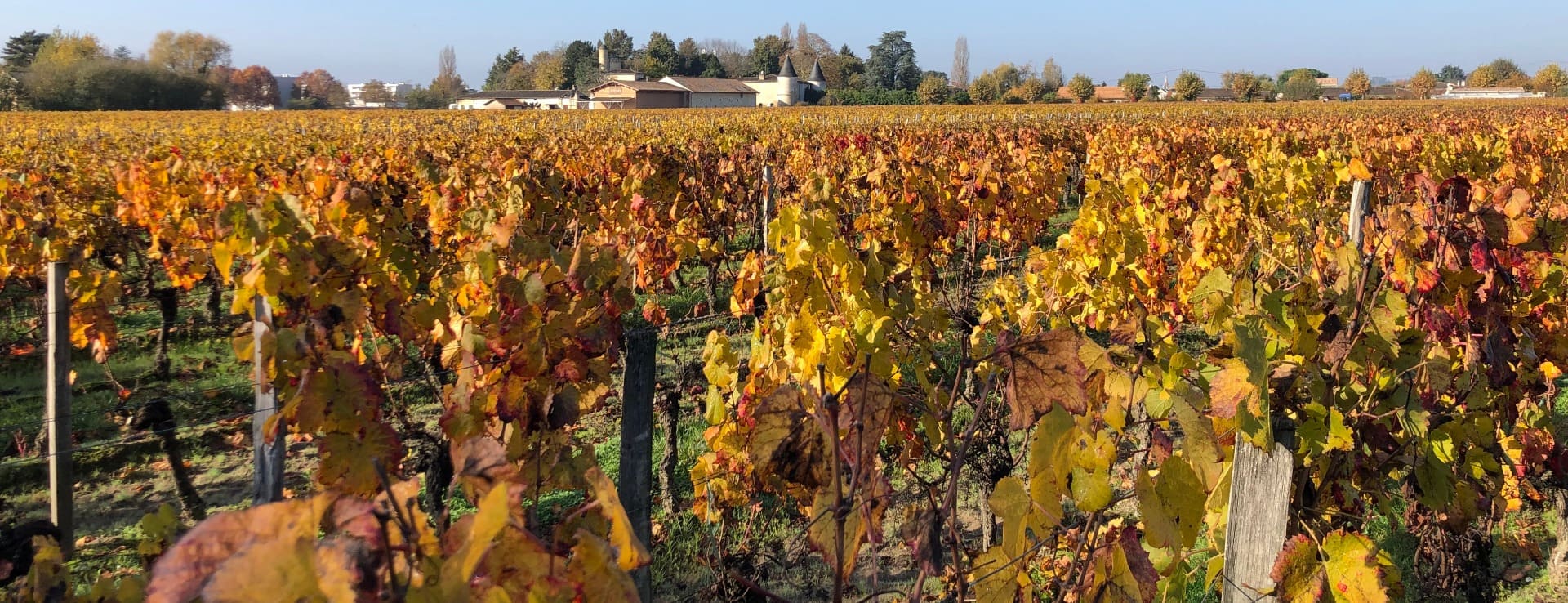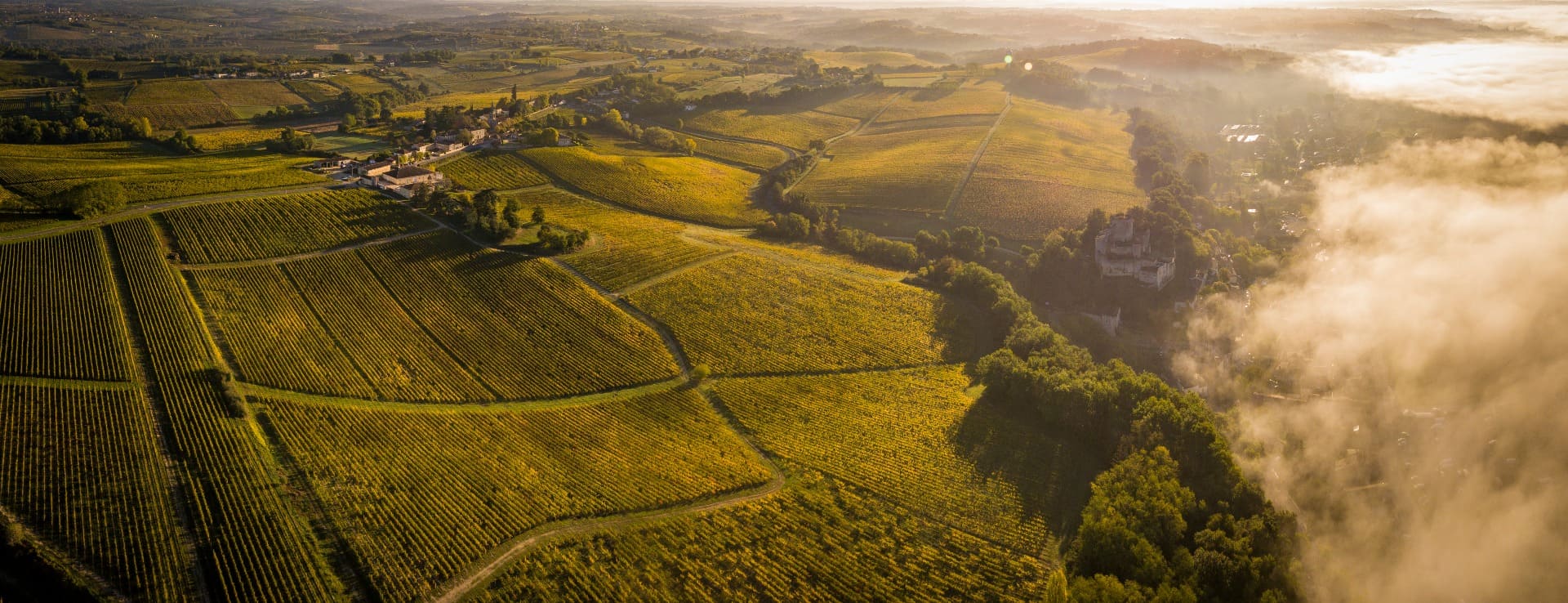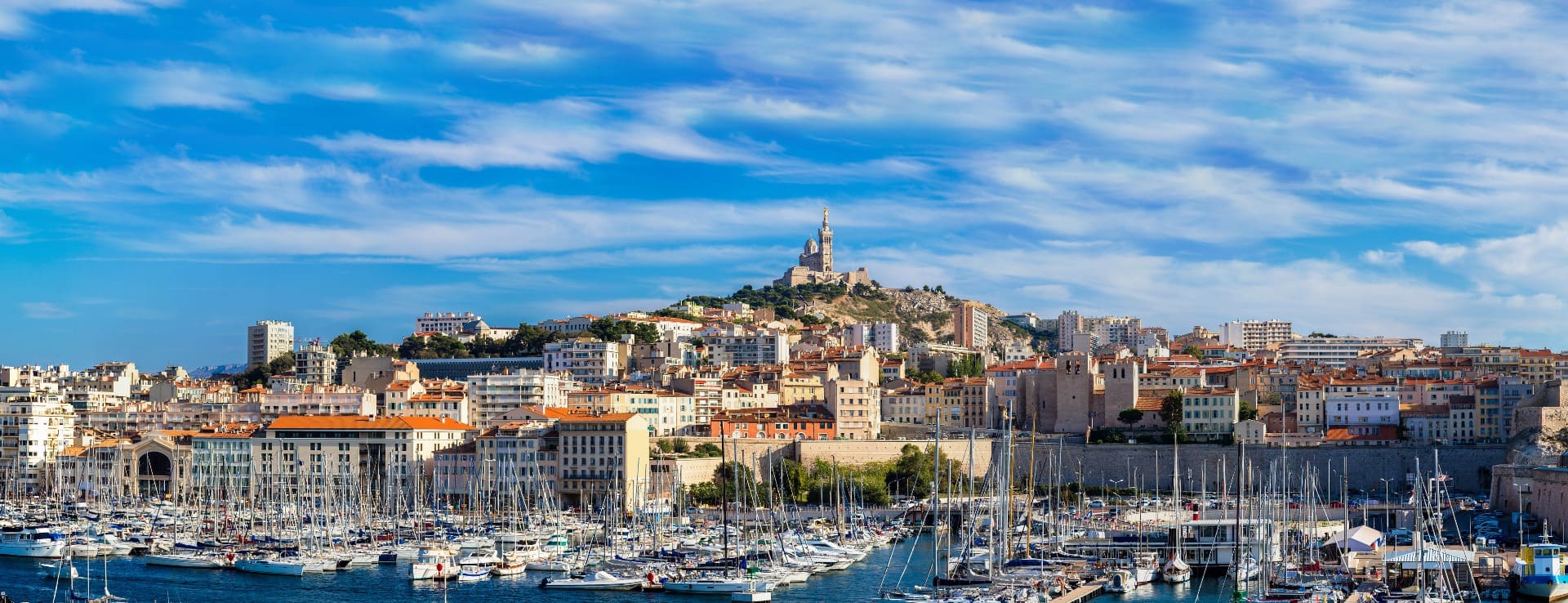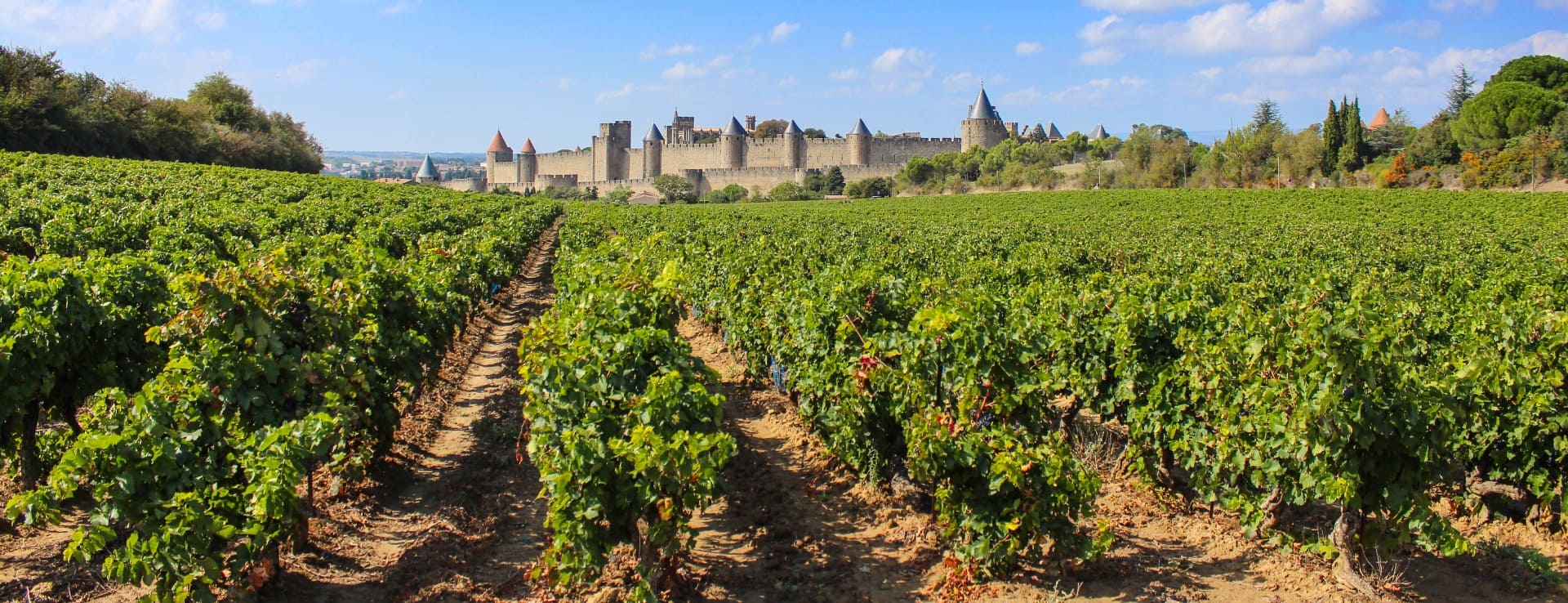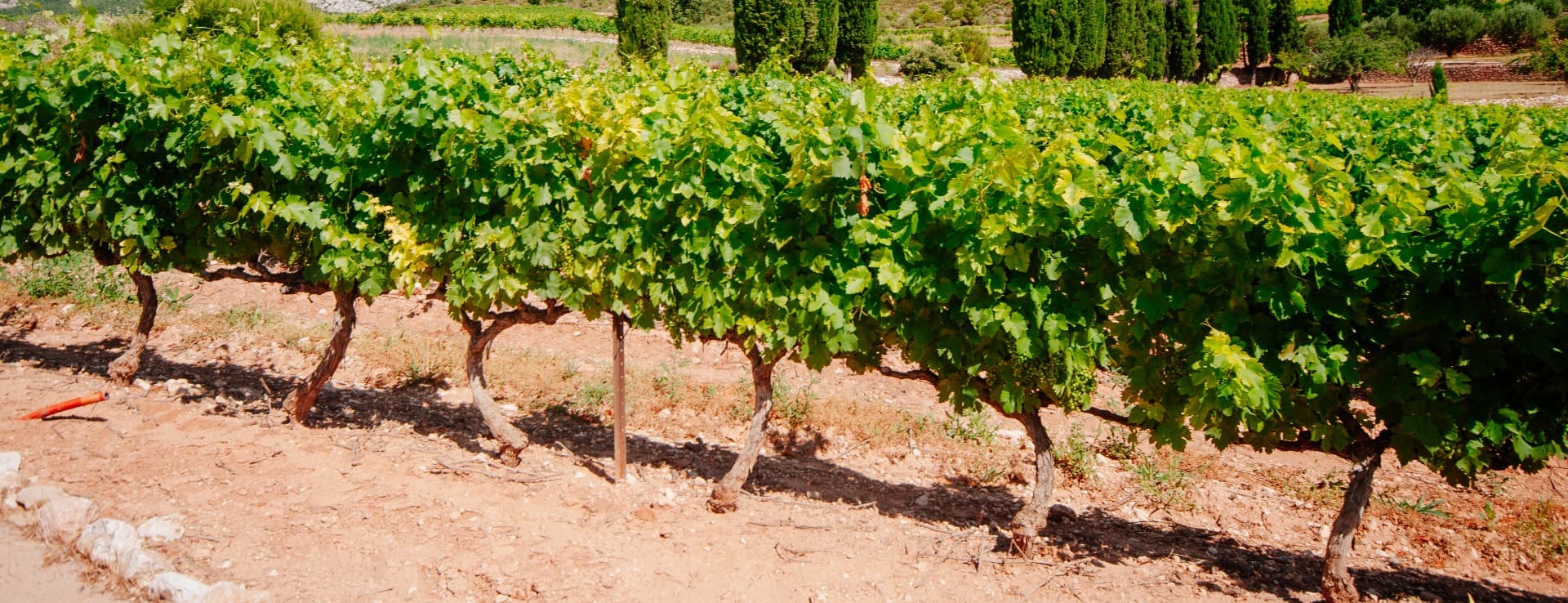Find your winery or vineyard
Infographic of the Denomination of Origin
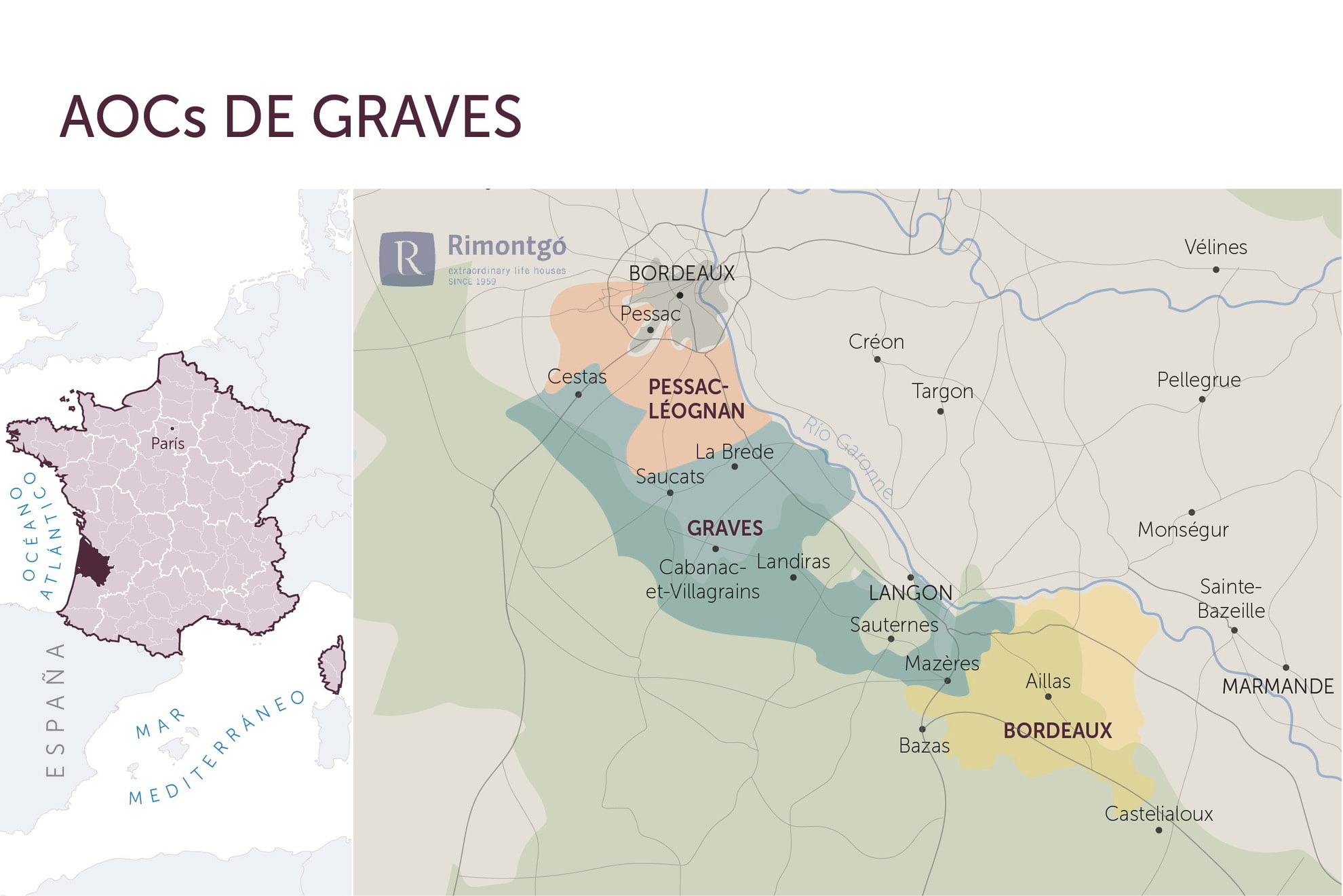
Change to imperial units (ft2, ac, °F)Change to international units (m2, h, °C)
AOC Graves and AOC Pessac-Leognan
The colour palette of Graves white wines is very varied depending on the wines, their ageing in barrel or steel, the year and grape variety and the age of the wine. The colour can vary between a deep golden yellow or conversely almost colourless like the wines of Château Carbonnieux and its best known anecdote proves it. The monks of the abbey of Saint-Croix de Bordeaux, then owners of the Château, wanted to market wines in Turkey, despite the Islamic prohibition, they had the idea to label the bottles as Carbonnieux mineral water. The Sultan commented: if French mineral waters are this good, why bother making wine? Over time, the colour of these white wines evolves towards a more pronounced intensity. The aromas are of pine, acacia and honey in the white wines. White wines are made from two complementary varieties, but with opposite character. In the first youth of the wine, the sauvignon blanc is expressive with notes of white fruits, flowers and citrus and lively in the mouth while the sémillon (Graves' historic variety) is discreet. As the wine ages, the situation is reversed and the sémillon becomes sauvignon blanc in aromatic expression with notes of acacia, candied fruits, honey and wax, fleur de lys and pine. Semillon reveals a strength, a dense, enveloping sensation and an unctuousness that makes it no coincidence that this variety is the queen of Sauternes.
The alliance between the varieties and the soil (full of stones, small pebbles rolled by the glacier and the river Garonne from the Pyrenees), bordered by the pine forest and the river, gives rise to an elegant aromatic palette in the wines of this wine-growing area. Thus the red wines, mostly Cabernet Sauvignon (and to a lesser extent Merlot), develop complex aromas of black fruits (cassis), violet, roasted fruits and cocoa, along with smoky notes and some liquorice. These wines are structured and elegant on the palate. After ten years, these wines reinforce their aromatic complexity with notes of game and smoked bacon. The red wines are smooth, silky and fine with a full-bodied wine structure and complex aromas of smoked, black and red fruits, liquorice, pine and wood. On the palate, the wine's mineral notes are revealed, its unctuous dimension that runs through the palate.
THE VINEYARD
In terms of its history and the classicism of the wines, the Graves vineyard is undoubtedly the most Bordeaux vineyard of all. It is a suburban vineyard in the north and stretches along the Garonne River as far as Langon.
Born, since antiquity, at the edge of the city walls of Burdigala, the Graves vineyard today extends over a 60 km tongue of gravely land, from Bordeaux to Langon, along the left bank of the river Garonne to the east and protected from the Atlantic weather by the forests of the Landes to the west. No other vineyard in the region is more closely linked to Bordeaux's wine-growing history than Graves. Since the Middle Ages, the town's wines have been known as "Graves de Bordeaux", outside the borders of Bordeaux's jurisdiction. Its name has only grown over the centuries, thanks to the marriage of Eleanor of Aquitaine in 1152 to Henry of Plantagenet, the future king of England. It is also thanks to Montesquieu, the most illustrious winemaker of the AOC with his Château de la Brède. And later in the 17th century, when clarets (light red wines) were drunk in London's taverns. It is in these circumstances that Haut-Brion wine, called Pontac wine (named after its owner Arnaud de Pontac), became the first Château de Bordeaux wine to be identified as such. Haut-Brion is in fact the only Chateau outside Médoc to be incorporated in the 1855 classification as Premier Cru Classé with its counterparts Château Latour, Margaux and Lafite Rothschild.
In the 1950s, the idea of creating a classification of Graves wines was reinforced and became official in 1959. 16 Châteaux were recognised, either for their red or white wines, or both. After the qualitative classification, it will allow the winegrowers to fight since 1964 for the creation of a communal AOC for the characteristics of their wines. They succeeded in 1987 when l'nao created the AOC Pessac-Léognan within the AOC of Graves. A prestigious AOC limited to 10 communes on the outskirts of Bordeaux.
THE AOCS
Since 1987, the Graves AOC has been subdivided in the southern suburbs of Bordeaux to create a new, more elite AOC called Pessac-Léognan.
Thanks to the work of historians and geographers, it seems that the Graves vineyard has been confined to the area around the town of Bordeaux (Burdigala) since ancient times and that it produces mainly red wines. Then, over the centuries, it spread southwards and joined in the 19th century with the other vineyards on the left bank of the Garonne, around Sauternes and Langon (producers of white wine), to form a single territory, Graves. However, in favour of the classification of the best properties of the AOC Graves in 1959, the winegrowers whose properties were classified (all located in the periphery of Bordeaux) asserted their wines which are superior to those of the south for their typicity, as well as for their value, their wine-growing history linked to Bordeaux. Finally, a new AOC was created for them and in 1987 the AOC Pessac-Léognan was born.
The two AOCs do not have the same production rules, but they share the same varieties. For red wines: cabernet franc, cabernet sauvignon, merlot, malbec (côt) and petit verdot. For white wines: semillon, sauvignon blanc and muscadelle.
The socio-historical heritage of the region's wines also marks its structure, as in Saint-Emilion. The average size of the vineyards is modest, very few have more than 25 ha, far from the large estates of the Médoc.
AOC Graves: this historical AOC covers a territory of 30 villages, not counting the 10 villages of the AOC Pessac-Léognan. This represents about 3,700 ha of vines in production, of which the majority (2,570 ha) are planted with red varieties and the rest with mainly dry white wine. Although in this AOC it is also possible to produce sweet wines and there is the AOC Graves Supérieures for these wines with about 330 ha. In fact, the regulations for production are less strict than in the AOC Pessac-Léognan. The yield per ha cannot exceed 50 hl. for dry reds and whites and 40 hl. for sweet wines. The minimum planting density is set at 5,000 feet per ha. This is why Graves wines have a lower production cost than those of Pessac-Léognan.
AOC Pessac-Léognan: having been created thirty years ago, the AOC has been voluntarily defined in a qualitative perspective in line with current demand. The territory of the AOC is smaller, covering only 10 villages and representing 1,530 ha of vineyards in production (1,293 ha of red and 267 ha of white). The regulations are stricter here, the yields per ha are 45 hl. for reds and 48 hl. for whites. The planting density per ha must be at least 6,500 feet. Another distinction with respect to the AOC Graves is the impossibility to produce white wines only from the sémillon variety. Always the sauvignon blanc must enter in a minimum of 25% in the blend of the white wines of Pessac-Léognan.
THE SOILS
Graves is not only the name of the AOC, the name comes from the stones that litter the soil of the vineyards. Pebbles rolled by the waters of the Garonne river from the Pyrenees. It is unique in that it is the only AOC in Bordeaux whose name comes from the nature of the soils that characterise it. Thus the term Grave designates a polished stone that resembles a pebble. The Graves terrain is a fairly recent formation on the geological time scale, having been formed in the Quaternary (about 2 million years ago). The alluvium of stones and sand, residues of the erosion of the Pyrenean rocks and of the Montagne Noire, were brought by the Garonne river and its tributaries, at the time more abundant than today, and deposited on the banks of the river. Thus, on a calcareous base eroded by the driving forces of the water, different types of rocks have been deposited over time (calcareous clay, silica, sand, silt, loam, marl...) which make up the Graves terroir.
But these stones are not present on the whole of the left bank of the river. They have been piled up on the successive ridges perpendicular to the flow of the water. Having been laid down in an older period of time than the current base of the Garonne, they are found in the form of terraces as can be seen at Portets. It is clear that the most distant part of the Garonne, created before the quaternary period, is composed of a calcareous subsoil on which we find the common sand of the Landes, unsuitable for vine-growing. As we approach the base, we come across the old high terrace full of Pyrenean gravel on which the Pessac-Léognan terrain is situated.
However, if the gravel is visually present on the surface, it is the geological diversity of the subsoil of the AOC that determines the quality of the wines. The deeper the roots are buried, the less gravel is present, because it mixes with the clay, sand or silt.
Around Portets, a village in Graves renowned for the quality of its wines, we find the plain of portes, composed of gravels from the Garonne which come from the Montagne Noire, from a more recent period than the Pyrenean gravels. And finally, closer to the current base of the river, we find the "palus", a submerged area where the soil is richer.
THE VARIETIES
If historically Bordeaux produced more white wines than reds, today white varieties account for no more than 12% of the vineyard surface. These are the main white varieties of Bordeaux:
Sémillon: this historical variety of the Bordeaux vineyard marks, by its signature, the greatest wines of the AOC Sauternes, Barsac, Saint-Croix-du-Mont et Loupiac, it imposes its opulent and vinous style to the best wines of Pessac-Légnan. Semillon is the most cultivated of the white varieties and the best planted, covering 55% of the white vineyard surface in Bordeaux. However, the surface of Sémillon vineyards has been reduced by two in thirty years due to the push of red varieties, which have been very successful in the last decades. The drop in sales of white wines and the lack of interest shown by consumers in natural sweet wines are the factors that have contributed to the decrease of white vineyards in the Gironde department.
If sémillon shows all its talents in the gravel soils of the Graves region, between Bordeaux and Langon, it loses none of its qualities when blended with sauvignon blanc. This is the reason why we find sémillon in many Graves wines and especially in Pessac-Léognan. However, its more closed style when the wine is young does not push winegrowers to use this variety for the production of white wines that are drunk quickly, preferring the sauvignon blanc.
Sauvignon blanc: if there is one white variety that has been a resounding success in Bordeaux, New Zealand, California and South Africa, it is Sauvignon blanc. In France, it is found in some of the best wines of the Loire Valley, in Sancerre and Pouilly-Fumé. But in the Graves region of Bordeaux, it is also enjoying spectacular success. In the small AOCs producing dry whites (AOC Bordeaux, Entre-deux-mers, Graves, Premiéres Côtes de Blaye...) intended for quick consumption, Sauvigon has been preferred to Semillon. Today it covers 32% of the white vineyard surface in Bordeaux. Its gustatory qualities, its freshness, its vivacity have given a boost to Bordeaux whites. It allows to produce dry, easy and seductive white wines at the first attack when grown in the great terroirs of Pesca-Léognan, it also shows how it can be complex when aged. In fact, the white varieties of some of the best crus of Bordeaux are mostly composed of sauvignon blanc: Haut-Brion (67%), Malartic-Lagravière (80%), Domaine de Chevalier (70%), Smith Haut-Lafite (90%) and the white wine of Couhins-Lurton is made exclusively from sauvigon blanc.
The other varieties: sauvignon and sémillon are not the only varieties used for white wine production in Bordeaux. There are other marginal varieties, which tend to disappear in favour of sauvignon or red varieties such as merlot, cabernet sauvignon or cabernet franc. Muscadelle, for example, still represents 7% of the surface of the white vineyard and allows the production of fruity wines with original aromas. There is also some white ugni, known in the region as Saint-Emilion de Charentes, which provides acidity and is used in the blending of Bordeaux sparkling wine. Finally, colombard, white merlot and ondenc grapes tend to disappear, although they are authorised in the regulations of the AOCs.
WINEMAKING
The white wines are made with freshness, aromatic complexity, length and balance in the mouth, all these elements characterise a great Bordeaux wine. To achieve this, the Sauvignon and Semillon must be delicately enlivened. A good variety is not enough to make a great wine. It takes the savoir-faire of the Bordeaux winemakers to allow their sauvignon and sémillon varieties to express all their freshness, aromas and opulence in seductive and complex wines.
THE HISTORY OF THE VINEYARD
The Graves vineyard is closely linked to the rise and development of Bordeaux, where the bourgeoisie, thanks to its privileges, has been able to maintain the reputation of its wines. Bordeaux is undoubtedly the wine capital of the world, but would it have come to this without the wines of Graves? It is true that vines have been cultivated around Burdigala since ancient times. The poet Ausone mentions this activity, but we will have to wait until the 12th century to understand the heart of the capital of Aquitaine beating to the wine rhythm when the activity in the port is frenetic before winter. Hundreds of men load barrels of wine, shipped just after the grape harvests, to the ports of England. It is a short period, but one of frenetic activity for the region. Eleanor of Aquitaine married Henry of Pantagenêt, after the arrival of William the Conqueror a century earlier, and the food habits and customs of the French prince were adopted, such as wine, the Christian drink par excellence. The loss of Rouen in 1214, then the surrender of La Rochelle ten years later, favoured the Bordeaux vineyard and made it the main supplier of wine to England. Bordeaux built its wealth around wine. Thus in 1307, a record year, the port shipped an incredible 900,000 hl of wine to England, a record which would not be equalled until the best years of the 19th century. But the Bordeaux vineyards faced competition from neighbouring vineyards. The wines of the Haut Pays descend along the Garonne, and beyond Langon, the wines of Cahors, Gaillac and Toulouse. To defend themselves against this competition, the Bordeaux ecclesiastics and bourgeoisie, the main owners of the vineyards, set up a legal and financial arsenal from the 13th century onwards to protect them from competition, to allow them to export their wines at the best time (after the grape harvest and before Christmas, to avoid the winter storms) and to be exempt from part of the taxes. All these provisions took the name of Bordeaux privileges and were not abolished until after the French Revolution in 1789. Only wines from vineyards under the jurisdiction of Bordeaux, especially Graves, could benefit from these privileges. From 1401 onwards, Médoc wines met the same fate as those of the Haut Pays. It was forbidden for them to be shipped abroad from the ports downstream from the Chartrons district in Bordeaux, which was the merchants' district. The Bordeaux bourgeoisie succeeded in ensuring that Médoc wines were sold first on the market in the capital of Aquitaine. Thus, from the 15th century onwards, the economic model that still governs the sale of great Bordeaux wines by the merchants located in the city was already in place.
This golden age lasted until 1453, when the King of France confronted the English army at Castillon, on the banks of the Dordogne, and was victorious in Bordeaux a few weeks later. At the end of the 15th century, wine expeditions from Bordeaux were ten times less important than a century earlier. The health of Bordeaux wines was boosted by the Dutch, who, from the beginning of the 6th century, reopened markets and thoroughly modernised local viticulture.
CLASSIFICATION
The Graves classification has been official since 1959, it was established taking into account the price of wines on the markets, raised over long periods by Bordeaux wine merchants. A first list was made in 1953 and revised and completed in 1959, it counts 16 châteaux, all located in the AOC Pessac-Leognan. The Château Haut-Brion is the only Bordeaux wine that is part of two classifications, one from 1959 and the other from 1855. In the classification there is no hierarchy, the wines are classified by their red wine or white wine, or both.
Château Haut-Brion : Cru Classé red Graves and 1º Cru Classé in 1855
Château Bouscaut: Cru Classé of red and white Graves
Château Carbonnieux: Cru Classé of red and white Graves
Domaine de Chevalier : Cru Classé of red and white Graves
Château Couhins: Cru Classé of white Graves
Château Couhins-Lurton: Cru Classé of white Graves
Château de Fieuzal: Cru Classé of red Graves
Château Haute-Bailly : Cru Classé of red Graves
Château La Mission Haut-Brion : Cru Classé of red Graves
Château La Tour Haute-Brion : Cru Classé of red and white Graves
Château Laville Haut-Brion : Cru Classé of white Graves
Château Malartic-Lagravière: Cru Classé of red and white Graves
Château Olivier : Cru Classé of red and white Graves
Château Pape Clément : Cru Classé of red Graves
Château Smith Haut-Lafitte : Cru Classé of red Graves
Discover more wineries and vineyards for sale in these wine regions in France
Subscribe to our mailing list to receive news about wineries and vineyards.

